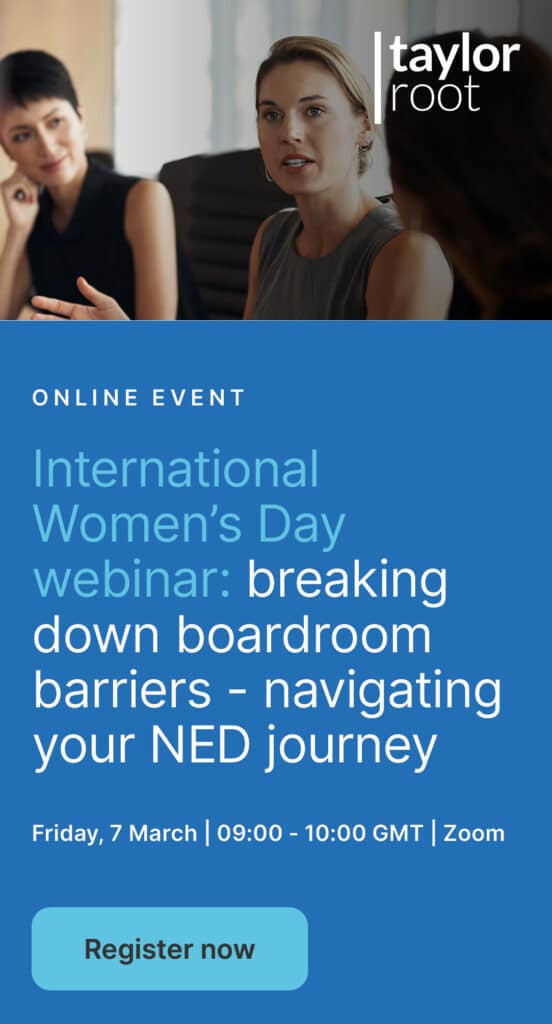Reimagining your legal career: the return to private practice
In recent years, an intriguing trend has emerged within the legal industry: seasoned lawyers, particularly those with extensive experience as General Counsel (GC), are increasingly transitioning back to private practice after years in-house. This shift reflects a notable evolution in the legal landscape, as private practice firms adapt to offer greater flexibility, entrepreneurial opportunities and environments that allow experienced professionals to thrive.
To explore this trend further, I recently spoke with Jonathan Greenwold, who joined the partner-only law firm Temple Bright. Jonathan’s career spans several high-profile roles, including seven years at the Magic Circle firm Slaughter and May, and senior in-house positions such as General Counsel at Aspect Capital and The Asset Management Exchange (AMX).

Following the acquisition of AMX by the Carne Group, Jonathan led their legal and compliance teams. His career journey highlights the motivations behind moving between in-house and private practice, as well as the opportunities and challenges that arise from such transitions.
What motivated your transition from private practice to in-house and then back again?
There were two factors behind my original move from Slaughter and May to private practice in 2008.
First, I had recently been seconded to Goldman Sachs where I found I had some skills that I could use effectively. For example, the ability to communicate clearly with non-lawyers and being able to figure out “what works” from an operational, process and people management perspective to get things done.
Second, it was the classic case of wanting to get closer to the business. As a lawyer in a Magic Circle firm, your clients are large institutions that have generally already made their strategic decisions before instructing the firm. Working in-house gives lawyers the opportunity to get involved at an earlier stage and contribute to those decisions. It is also very rewarding, as an in-house lawyer, to see those decisions come into effect over time.
The move back to private practice was quite a natural progression, as my in-house roles became increasingly entrepreneurial. I spent 11 years at a hedge fund, with a good period helping to shape the firm’s strategic direction as GC and a board director. The firm became quite acquisitive, through team lift-outs/acquisitions. I really enjoyed the corporate strategy element of the job so, in 2019, I helped start the AMX, an institutional investment funds platform with WTW, which we scaled up to $60bn assets under management before selling to a strategic buyer in 2022, the Carne Group, where I became GC.
Joining Temple Bright gave me opportunity to combine being a lawyer with running my own mini business. Whereas an in-house legal team is a cost centre, I’m relishing being the fee earner and revenue driver.
Why did you decide to join Temple Bright?
In Temple Bright I was lucky to find a firm that combines an excellent client offering with a great deal for the lawyers.
Initially, one of Temple Bright’s partners, Tom Hine, reached out to me as a potential client. Tom was GC at the London Metal Exchange for many years and I was intrigued by his decision to move back to private practice. Tom painted a compelling picture of life at Temple Bright, which was reinforced when I spoke to the firm’s very impressive co-founders, Tim Summers and Justyn McIlhinney.
As a “new model”, partner-only law firm, Temple Bright has a great offering for its lawyers. The firm operates a self-employment model that we call a chambers practice – a solicitors’ firm which is structured like a barristers’ chambers and forms a single, unified practice. Culturally, it offers the partners flexibility, autonomy and freedom from internal politics and bureaucracy, while also preserving some of the best features of the traditional city firms, like high standards and teamwork. In fact, some of my new clients were referred to me from Temple Bright colleagues – the excellent Richard Neary in our employment team, the very experienced pensions lawyer, Rosalind Connor and Tepo Din who has been very quickly building up his practice after joining TB from BNY a few months ago.
But perhaps most importantly, having spent most of my career buying legal services, I was struck by the client benefits of the partner-only model. It provides clients with reasonably priced legal services from senior, expert lawyers who are responsive and accessible.
So, it was this win: win for both clients and lawyers that swung it for me.
What are the most significant lessons you learned, during your time in-house, that you believe have influenced your approach in private practice?
My three key learnings have been the importance of great communication, strong relationships and understanding the business.
On the first two, working in-house quickly teaches you the importance of your “bedside manner” as a lawyer. Colleagues who succeed in-house combine strong technical and soft skills.
Colleagues are much quicker to challenge an in-house peer than an external lawyer, so as an in-house lawyer you must hone your communication skills to get your message across clearly, while also working hard at building trust and confidence. You learn quickly that there’s no point being “right” if you deliver the message badly.
On returning to private practice, I’ve worked hard at good client communication, for example agreeing priorities with your client and giving clients regular updates on how work is progressing.
As an in-house lawyer, it is also fundamental to understand your business, which in turn allows you to advise in a way that’s pragmatic and commercial. Presented with the same transaction or legal agreement, two different businesses will have different commercial needs and priorities. If you understand your client’s sensitivities, you can focus on the legal terms that really matter to them. You’ll work more quickly and efficiently, and you’ll get a better deal for your client.
What would your advice be to others who want to move back to private practice – how can you make it work and what are the challenges?
First, some in-house lawyers worry that their technical abilities are rusty. My advice is to have faith! You’ll find the black letter lawyering comes back to you very quickly, like muscle memory.
Second, you’ll no doubt have a very broad network, so make good use of that. I’ve been bowled over by how generous people have been with their time, with many referring me on to their own colleagues, contacts and clients. This has been super helpful in growing my practice.
For me, it’s been brilliant. If you have the energy and enthusiasm to leverage your network, you can adapt and make it work. It’s hugely rewarding to work for a whole range of clients in different organisations, solving their legal problems and helping them grow their business.
If you are considering a transition into private practice or looking for a new in-house role, get in touch with the Taylor Root team.




